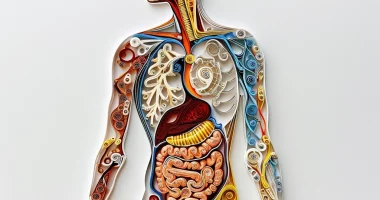Golfer’s elbow
Definition
Golfer’s elbow or medial epicondylitis is an inflammatory process in the area of muscle attachment to the inner epicondyle of the humerus. It develops due to an overload of the muscles of the pronators and flexors of the hand. The onset is gradual. It is accompanied by unpleasant sensations or pain on the inner surface of the elbow joint with irradiation to the forearm. The pain increases with exertion. Muscle strength is preserved or slightly reduced. In 50% of cases, the ulnar nerve is involved. The diagnosis is made based on anamnesis and characteristic symptoms. To exclude other pathological processes, radiography, ultrasound, and MRI are appointed. Treatment is usually conservative: limitation of load, cold, and physiotherapy. If ineffective, surgery is indicated.
General information
Medial epicondylitis is an inflammation in the area of the inner epicondyle of the shoulder at the site of attachment of the flexor and pronator muscles of the hand. In practical traumatology and orthopedics, it is noted that medial epicondylitis occurs less frequently than lateral epicondylitis. The development of the disease is caused by sports loads or professional duties involving repeated flexion or rotation movements of the hand. Men aged 30-50 years are more often affected. Usually, the dominant limb is affected (right-handed people – right hand, left-handed people – left hand). Treatment of medial epicondylitis is performed by orthopedic traumatologists. This condition can be considered a syndrome of overloading of the flexor and pronator muscles of the hand, mainly the radial flexor of the hand and the circular pronator, attached to the medial epicondyle of the humerus. The ulnar nerve is involved in more than 50% of cases.
Causes
The occurrence of medial epicondylitis is usually caused by characteristic sports activities. It can occur in golfers, baseball players, swimmers, fencers, arm wrestlers, and athletes frequently performing throwing movements. Sometimes, medial epicondylitis is caused by performing occupational duties. Usually, the disease develops in people who are engaged in heavy physical labor, such as loaders, lumberjacks, construction workers, carpenters, etc.
The development of medial epicondylitis is associated with sports activities requiring frequent or prolonged flexion and pronation of the forearm and hand, such as golf, baseball, swimming, fencing, arm wrestling, and others. As a result, angiofibroplastic changes in collagen and inflammatory changes are formed, leading to micro-tears of muscles and their tendons and degenerative changes in the epicondyle of the humerus. The elbow joint of the dominant arm is more often involved in men between 30 and 50 years of age.
Pathologic anatomy
The medial epicondyle is a small tubercle in the lower part of the humerus. It is located on the inner surface of the elbow joint and is the attachment point for the tendons of muscles involved in flexion and pronation of the hand. During repetitive movements due to overload in the tendon tissue, micro-tears are formed, and inflammation occurs. Over time, dystrophic changes develop in the area of tendon attachment. Less durable scar tissue replaces full-fledged tendon tissue capable of withstanding high loads.
Symptoms of medial epicondylitis
The main complaint is pain or discomfort in the projection of the medial epicondyle of the shoulder, usually during movements, as well as weakness and pain irradiation to the forearm and hand. Examination reveals painful palpation on the anterior surface of the medial epicondyle of the shoulder in the projection of the involved muscles. Local diagnostic injection of local anesthetic completely stops painful sensations. The volume of movement in the elbow joint remains normal.
A detailed neurologic examination facilitates distinguishing medial epicondylitis from isolated ulnar neuropathy and radiculopathies.
Patients complain of discomfort or pain on the inner surface of the elbow. The pain increases during movements and irradiates the distal parts of the limb. Anamnesis reveals regular increased loads on the forearm and hand. Palpation reveals pain on the anterior surface of the internal epicondyle and in the projection of the muscles of pronators and flexors of the hand. The movements are in total volume. Sometimes, there is mild atrophy and decreased muscle strength.
Diagnosis
The diagnosis of medial epicondylitis is established based on clinical signs and characteristic anamnesis. To exclude bone and joint pathology, radiography of the elbow joint in two projections is performed. Differential diagnosis involves ligament damage (rupture or stretching of the ulnar collateral ligament), medial instability of the elbow joint, cervical radiculopathy, and cubital canal syndrome. MRI of the elbow joint is prescribed to assess the condition of the tendon and ligament apparatus, electromyography to clarify the condition of muscles, and consultation with a neurologist and a detailed neurological examination to rule out nervous system disorders.
Treatment of medial epicondylitis
Treatment is usually conservative. In the early stages, it is recommended to eliminate the load on the joint and apply cold to the affected area. To reduce inflammation and eliminate pain syndrome, NSAIDs are prescribed. Subsequently, orthoses are used, and the patient is referred to physical therapy. In some cases, electrostimulation is used. With persistent pain syndrome, resort to therapeutic blockades – injecting corticosteroids in the inflamed area. After the elimination of pain, begin exercises to stretch pronators and flexors. Then, isometric exercises are added to the program, and a little later, exercises with increasing load are added.
The indication for surgical treatment in medial epicondylitis is the ineffectiveness of conservative therapy when the disease duration is 6-12 months. Surgical intervention involves the removal of pathologically altered areas with subsequent suturing of tendons to the place of attachment. Sometimes, tunnelization of the medial epicondyle is performed to improve blood supply. If necessary, revision of the ulnar nerve is performed. In the postoperative period, short-term immobilization is performed, after which rehabilitation measures are started. Forearm pronation and wrist flexion with overcoming resistance are allowed after six weeks.
All these treatment options are available in more than 820 hospitals worldwide (https://doctor.global/results/diseases/golfers-elbow). For example, Tennis elbow surgery can be performed in these countries at following approximate prices:
Turkey$1,160 in 29 clinics
Germany$4,547 in 46 clinics
China$5,086 in 6 clinics
United States$6,617 in 26 clinics
Israel$6,930 in 14 clinics.
Prognosis and prevention
The prognosis is favorable. About 90% of patients return to sports and professional activities. In the remaining cases, muscle strength may weaken, not affecting the ability to perform routine daily activities. In conservative therapy, resumption of habitual exercise is allowed after the complete elimination of pain syndrome and in surgical treatment four months after surgery. Prevention consists of avoiding excessive loads on the elbow joint.

